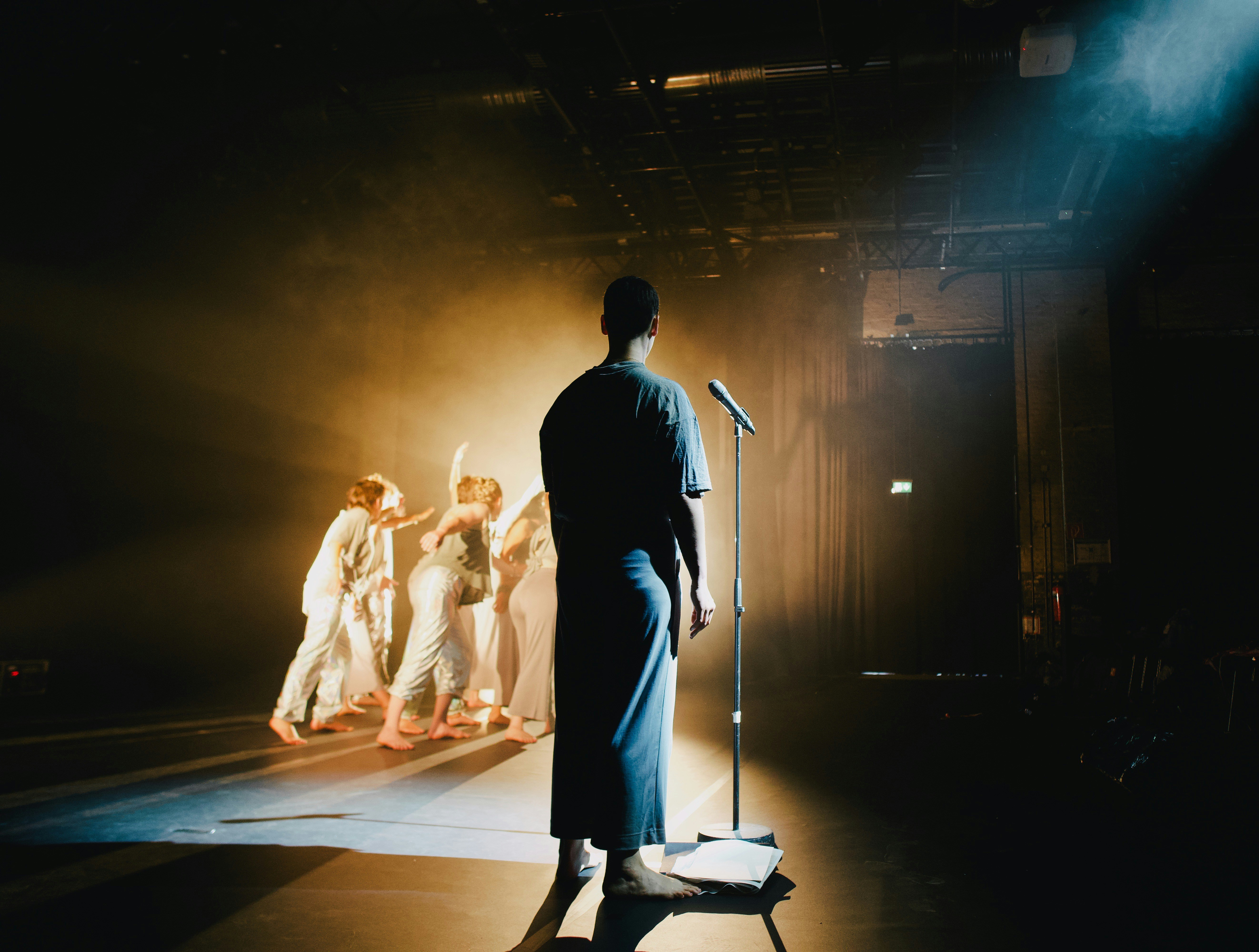What Is Dialogue in Plays vs. Dialogue in Screenplays?
by WriteSeen
Dialogue in plays and screenplays serves distinct yet vital roles, tailored to their respective mediums. In plays, dialogue carries the weight of the story and creates vivid characters and settings, relying heavily on words given the absence of dynamic visuals. Screenplays, conversely, use dialogue to support visual storytelling, focusing sharply on brevity and subtext. Each medium has its unique techniques and approaches to dialogue in plays vs. dialogue in screenplays, shaping how stories unfold.
Whether untangling the complexities of a stage's live performance or capturing the cinematic allure on screen, understanding these differences can immensely shape one's creative expression. Dive deeper into this guide to explore how these nuances can elevate your narrative craft.
The Role of Dialogue in Plays
Dialogue in plays is vital for developing the story and characters. In theater, dialogue isn't just words; it's the heart of the narrative. Performances hinge on this verbal expression. Without many visual effects, words have to work hard. They convey emotions, reveal motives, and create conflict on stage.
Emotional Impact: Dialogue carries the emotional weight of the play. It reveals internal states through spoken words, offering the audience a window into the characters' souls. In a play, characters might express feelings or ideas through long monologues that draw you into their internal struggle or joy.
Character Development: Who a character is often emerges from how they speak or what they say. The dialogue in plays like "Death of a Salesman" doesn't just tell a story. It builds a world through speech patterns, tone, and content, offering layers of insight into each character.
Thematic Expression: Words must do double duty. They not only drive the plot forward but also reflect the larger themes of the play. Dialogue can explore profound ideas, making the audience ponder deeper truths.
Theater demands dialogue with precision. Every line matters. Words are actors themselves, shaping the world one line at a time. The simplicity of the stage setup means that each line spoken is the primary tool for storytelling. Thus, crafting dialogue in a play involves careful attention to rhythm, timing, and tone—elements that make live performances compelling.

The Role of Dialogue in Screenplays
Dialogue plays a different role in screenplays. Here, it's not the sole method of storytelling. It works in tandem with visual elements, focusing on advancing the plot and revealing character motivations subtly and efficiently.
Screenplay dialogue serves multiple functions:
Plot Advancement: Dialogue in films often aims for brevity. It propels the story forward swiftly. Unlike plays, not every bit of character development relies on speech. A few well-chosen words can add depth without lengthy conversations. Words are only one part of the narrative.
Visual Complement: The screen relies heavily on visuals—dialogue complements these, not overshadows them. Visual storytelling takes precedence. Dialogue often supports and enhances what is shown on the screen, playing second fiddle to images but still crucial.
Subtext and Economy: Since you're using fewer words, each one must count. Screenplays often rely on subtext, where what is unsaid matters as much as what is spoken.
Screenplay dialogue requires a different discipline than playwriting. While plays lean into the power of the spoken word, screenplays demand precision. The dialogue must fit seamlessly into a broader cinematic narrative. Here, you’re constructing a dialogue that plays well with film’s visual dynamism. Dialogue, in this medium, enhances but doesn't dictate.
Structural Differences: Dialogue in Plays vs. Screenplays
Understanding the structural differences between dialogue in these two mediums is key for creators striving for excellence. Plays and screenplays serve different storytelling modes, and this affects how dialogue is crafted, structured, and used.
Format and Structure: In plays, dialogue often drives the entire narrative, with minimal stage direction. This format lets characters speak directly to themes and audiences. Screenplays, by contrast, script both dialogue and visual cues. Extensive scene descriptions accompany concise dialogue.
Pacing and Timing: Time flows differently between stage and screen. Plays unfold in real-time, demanding a rhythm that's engaging throughout a live performance. Screenplays, however, can manipulate time creatively through editing. Montage sequences and quick cuts allow for varied pacing, making dialogue more episodic and clipped.
Execution and Adaptation: Plays require fluid dialogue for live execution. It needs to captivate in a single take without editing. In film, dialogue might be captured in several takes, providing opportunities for nuance and subtlety in each iteration.
Exploring these structural differences is crucial for any writer, director, or actor navigating both worlds. Recognizing how dialogue adapts and serves each medium's unique demands reveals its limitless creative potential.

Dialogue Techniques Unique to Playwriting
In playwriting, dialogue is a performative tool. It’s crafted to engage the audience live, focusing on depth and thematic resonance. Unique techniques emerge to harness the theater’s intimate setting.
- Monologues and Soliloquies: These are signatures of the stage, providing a window into a character’s inner life. They pause the action to delve into thoughts, emotions, and conflicts. This direct communication invites the audience into the character’s world.
- Breaking the Fourth Wall: Plays often play with audience engagement directly. Addressing the audience bridges the gap between actors and viewers, making stories feel personal and immediate.
- Choral Characters or Communal Voice: The use of group dialogue or communal storytelling adds layers, creating a shared narrative voice that builds atmosphere or tension.
These techniques are tailored for live interpretation, where each delivery and audience interaction can alter the feel of the narrative. In playwriting, dialogue isn't just heard—it's felt. As creators, appreciating this helps craft works that resonate emotionally and intellectually in ways unique to the theater.
Dialogue Techniques Unique to Screenwriting
In screenwriting, dialogue is intricately woven with visuals to enrich storytelling. It’s a dance of words and imagery. Here’s how screenwriters make dialogue impactful.
Subtext and Silence
What you see is often as telling as what you hear. In film, subtext elevates dialogue. Characters express deeper meanings through unspoken words. Subtle pauses, body language, and unspoken tension can say more than long-winded monologues. Films like "Lost in Translation" master this, immersing you in the emotional landscape with minimal conversation.
Voiceovers and Internal Monologues
Voiceovers can bridge gaps between what happens on screen and what a character feels inside. These allow insights into inner thoughts without disrupting the flow of the film. Taking this technique on board can add layers to characters, letting their inner conflicts emerge in symphony with the visuals.
Complementary Visuals
Screenwriters leverage visuals to complement spoken words. Dialogue may set the stage, but it’s the cinematography that paints the full picture. Think "WALL-E": dialogue is sparse, yet the visuals carry a powerful narrative. This interplay ensures dialogue isn’t overloaded but works cohesively with the film’s other elements.
Success in screenwriting depends on your ability to see dialogue not just as words but as part of a bigger tapestry of visual and auditory cues.

Adapting Dialogue from Plays to Screenplays
Adapting from stage to screen requires finesse. It’s more than just trimming lines—it's about transforming dialogue to fit a new medium.
Embracing Visual Narrative
Plays rely heavily on dialogue for storytelling. With film, scenes have to breathe visually. If you’re adapting, focus on converting dialogue-heavy scenes into visual-driven sequences. Employ cinematic techniques to convey what's between the lines with visuals.
Reimagining Structure
Films offer flexibility in structure, unlike the linear format of plays. Screenplays can utilize flashbacks, montages, and non-linear storytelling. This requires adaptation—not just in reducing dialogue, but also in restructuring it to fit a more dynamic narrative arc. A stage scene may become a brief montage, using visuals to replace unnecessary dialogue.
Maintaining Essence
While making changes, the core of the play must stay intact. Characters’ essence and thematic goals need preservation. Adaptation is about delivering the same emotional punch, albeit through different means. Capture the spirit of the original piece but be willing to translate it into a language that speaks to film audiences.
Examples of Effective Dialogue in Plays and Screenplays
Learning from the masters is crucial. Both plays and screenplays offer guidance on crafting stellar dialogue.
Plays: Depth and Delivery
Consider "A Doll’s House" by Henrik Ibsen, which thrives on intense dialogues to unfold personal and social conflicts. Each line propels the characters into a vivid exploration of societal norms. In "The Crucible," dialogue builds an atmosphere thick with tension, reflecting the chaos and desperation of the times.
Screenplays: Precision and Impact
Look at "The Godfather." Every word is meticulously placed, weaving subtext and developing complex characters. In "Pulp Fiction," dialogue doesn’t just advance the plot—it creates rhythm and tension, making mundane conversations unforgettable.
Understanding these examples helps writers recognize how dialogue can shape characters, emotions, and themes across different formats. Whether crafting tension-heavy theatrical exchanges or cinematic subtext-driven conversations, knowing these techniques is essential.
As we conclude, let’s explore how you can apply these insights and refine your storytelling craft across stage and screen.
Conclusion: Mastering Dialogue Across Mediums
Understanding the nuances of dialogue in plays versus screenplays empowers writers to craft compelling narratives suited to their respective mediums. In plays, dialogue is the driving force, shaping characters, emotions, and themes through spoken word alone. In screenplays, dialogue works in harmony with visuals, requiring brevity, subtext, and precision to enhance cinematic storytelling.
By mastering the structural and stylistic differences between these formats, writers can create dialogue that resonates—whether on stage or screen. The key is to embrace the strengths of each medium, adapting dialogue techniques to serve the story most effectively.
Looking to refine your dialogue and connect with industry professionals? Join WriteSeen, the platform where writers and producers collaborate to bring stories to life. Share your scripts, network with creatives, and elevate your storytelling today.
TAGS